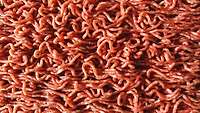New technique detects impurities in ground beef within minutes
Food science students were able to say with 80% accuracy which animal parts were used and in what concentration.

Researchers at the University of British Columbia (UBC), Canada, have found a better way to identify unwanted animal products in ground beef.
Food science students led by professor Xiaonan Lu used a laser-equipped spectrometer and statistical analysis to determine with 99% accuracy whether ground beef samples included other animal parts. They were able to say with 80% accuracy which animal parts were used and in what concentration.
Their new method can accomplish all of this in less than 5 minutes, which makes it a potentially transformative food inspection tool for the government and food industry.
“By using this innovative technique, the detection of food fraud can be simpler, faster and easier,” says Yaxi Hu, the study’s lead author and a PhD candidate in UBC’s faculty of land and food systems.
To establish their method, the UBC researchers aimed a spectrometer at meat samples they prepared by grinding together beef and offal from local supermarkets at various concentrations. Because animal products all have different chemical compositions, their molecules absorb and scatter energy from the spectrometer’s laser in different ways. The spectrometer captures these signals—or spectra—to produce an “image” of each substance. These spectral images can serve as a library for comparison with other samples.
Whether a meat sample is authentic or adulterated with offal can be determined by comparing its spectral image with the pre-established library to see if there’s a match.
The method improves on existing techniques that are more complicated and time-consuming. For example, a technique known as liquid chromatography works well, but requires meat samples to be liquefied with solvents before testing, which can take more than an hour.
“The instrumentation for this technique is not that complex,” Hu says. “So, if government or industry wants to do some rapid screening, they don’t need to find highly trained personnel to conduct the experiment.”
All they would need is a spectrometer and user-friendly software that connects to a robust library of spectral images. As more types of meat and offal were analyzed and their results stored, the technique would become even more accurate.
The researchers’ ultimate goal is to create a smart device that can be used by consumers at home for the authentication of different food products, much like the pregnancy test strip.
Hu’s co-authors were corresponding author Lu; electrical and computer engineering post-doctoral fellow Liang Zou; and food science undergraduate student Xiaolin Huang. The research is supported by the Natural Sciences and Engineering Research Council of Canada and the Peter Wall Institute for Advanced Studies.
This article was originally posted on www.refrigeratedfrozenfood.com.
Looking for a reprint of this article?
From high-res PDFs to custom plaques, order your copy today!





